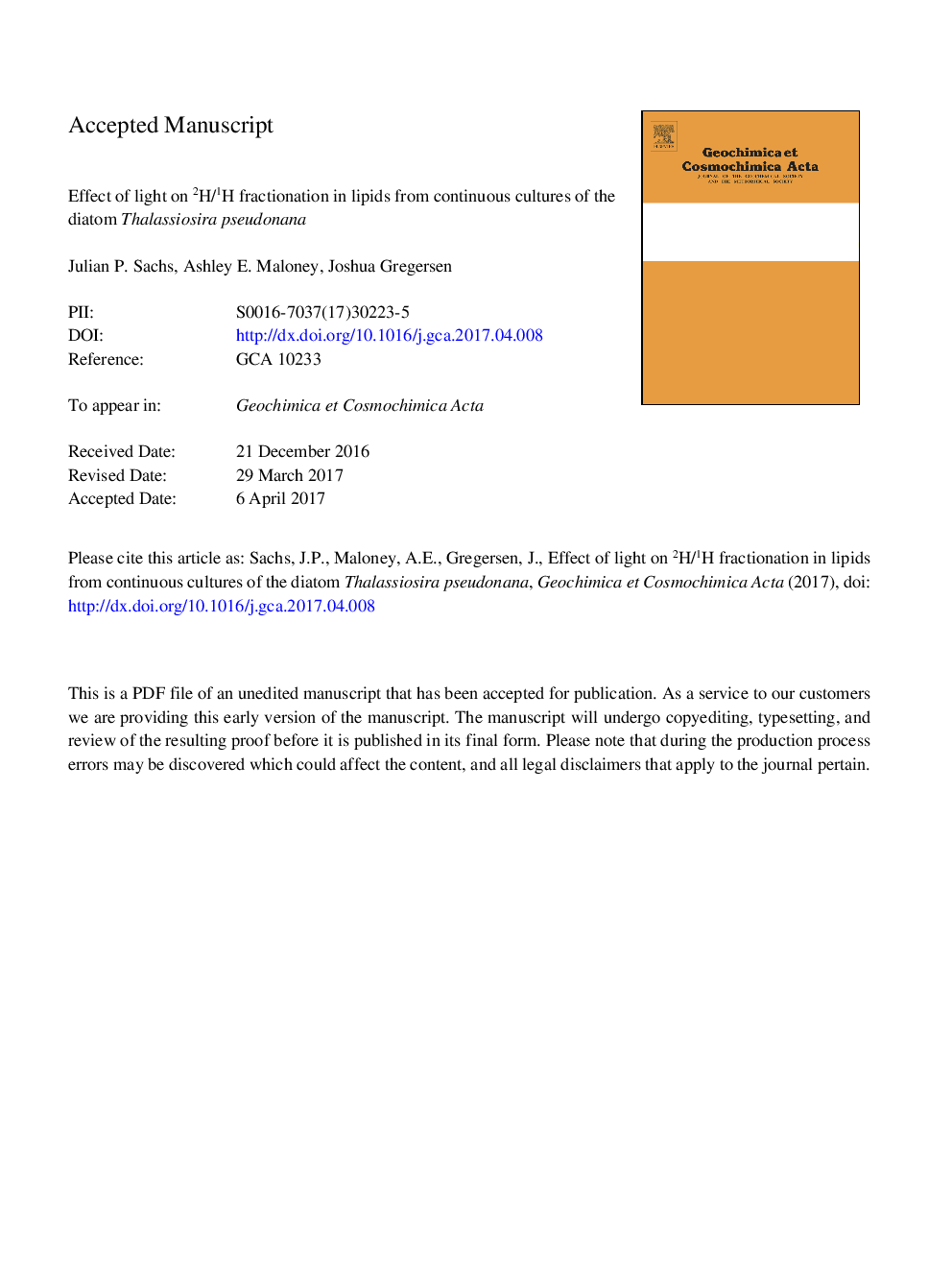| Article ID | Journal | Published Year | Pages | File Type |
|---|---|---|---|---|
| 5783285 | Geochimica et Cosmochimica Acta | 2017 | 35 Pages |
Abstract
Continuous cultures of the marine diatom Thalassiosira pseudonana were grown at irradiances between 6 and 47 µmol mâ2 sâ1 in order to evaluate the effect of light on hydrogen isotope fractionation in lipids. δ2H values increased with irradiance in phytol by 1.1â° (µmol mâ2 sâ1)â1 and by 0.3â° (µmol mâ2 sâ1)â1 in the C14:0 fatty acid, but decreased by 0.8â° (µmol mâ2 sâ1)â1 in the sterol 24-methyl-cholesta-5,24(28)-dien-3β-ol (C28Î5,24(28)). The anticorrelation between δ2H values in C28Î5,24(28) and irradiance is attributed to enhanced sterol precursor synthesis via the plastidic methylerythritol phosphate (MEP) pathway at high irradiance, relative to the cytosolic mevalonic acid (MVA) pathway, and the supposition that MEP precursors are 2H-depleted compared to MVA precursors because they incorporate a greater proportion of hydrogen from photosynthetically produced NADPH. Increasing δ2H values of phytol and C14:0 with irradiance is attributed to a greater proportion of pyruvate, the last common precursor to both lipids, being sourced from glycolysis in the mitochondria and cytosol, where enhanced incorporation of metabolic NADPH and further hydrogen exchange with cell water can enrich pyruvate with 2H relative to pyruvate from the chloroplast. Irrespective of the biosynthetic mechanisms responsible for the 2H/1H fractionation response to light, the high sensitivity of lipid δ2H values in T. pseudonana continuous cultures would result in â30â° to +40â° variations in δ2H over a 40 µmol mâ2 sâ1 range in sub-saturating irradiance if expressed in the environment, depending on the lipid.
Keywords
Related Topics
Physical Sciences and Engineering
Earth and Planetary Sciences
Geochemistry and Petrology
Authors
Julian P. Sachs, Ashley E. Maloney, Joshua Gregersen,
